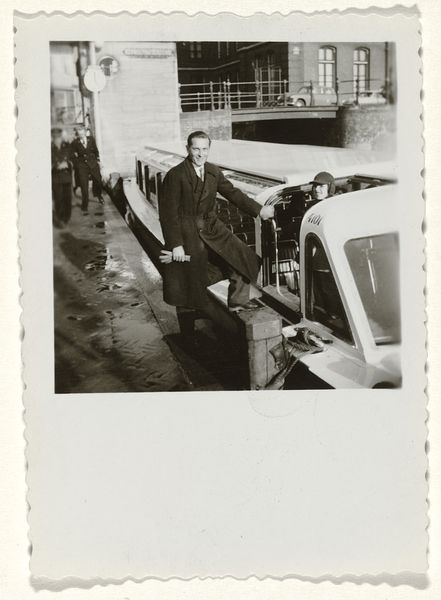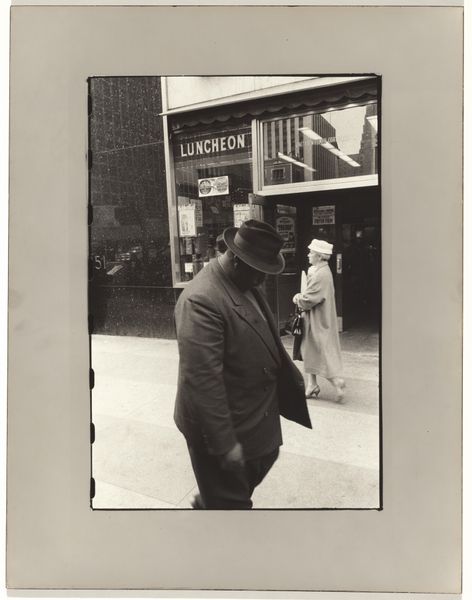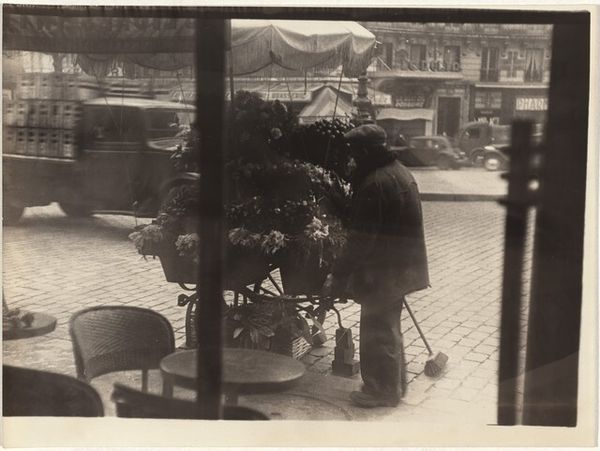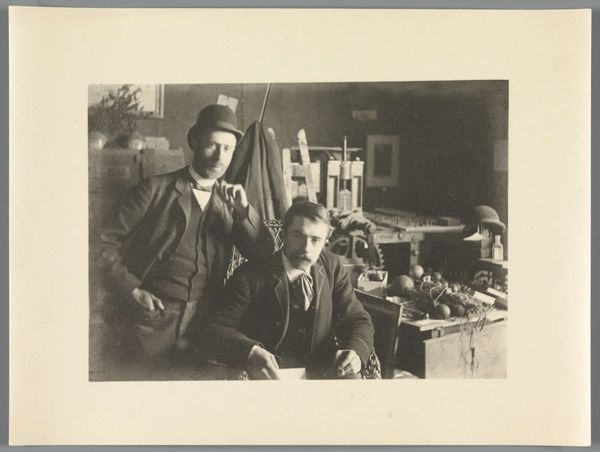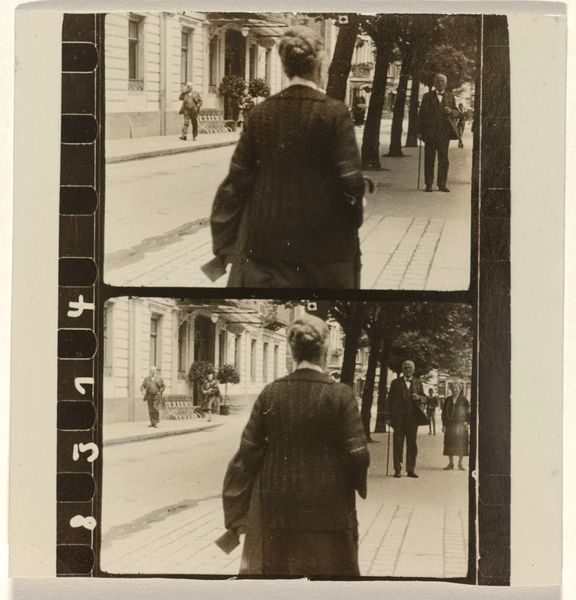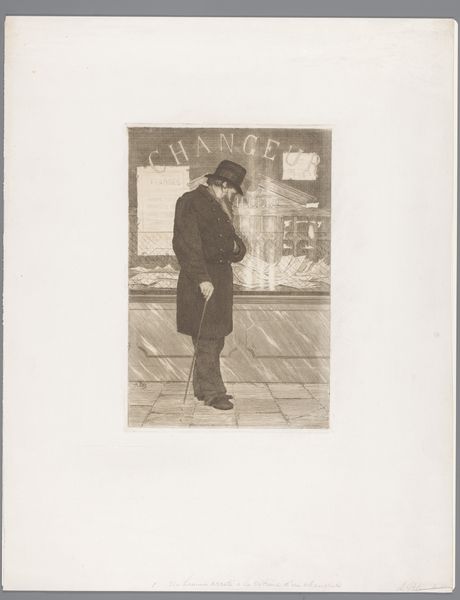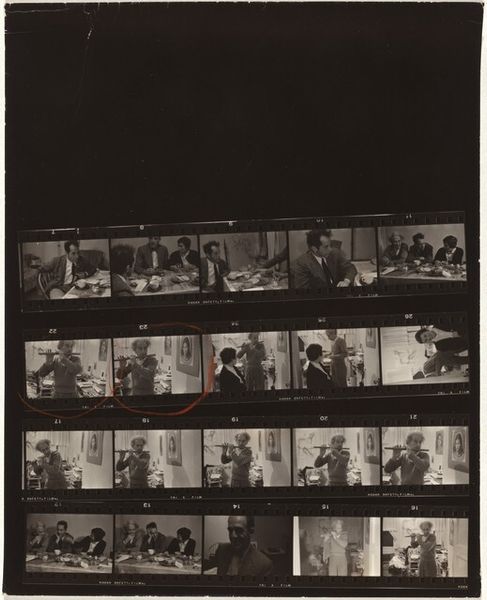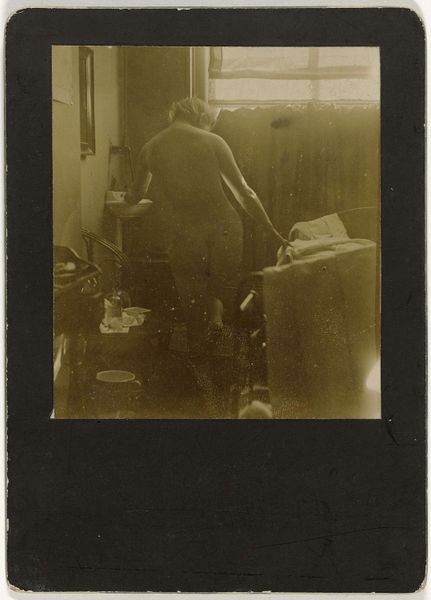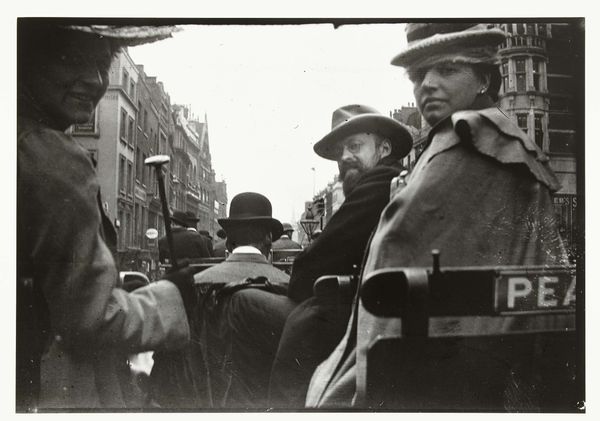
print, photography, gelatin-silver-print
#
portrait
#
film photography
#
photo restoration
# print
#
archive photography
#
street-photography
#
photography
#
historical photography
#
gelatin-silver-print
#
monochrome photography
#
monochrome
Dimensions: image: 6 x 5.6 cm (2 3/8 x 2 3/16 in.) sheet: 9.5 x 6.4 cm (3 3/4 x 2 1/2 in.)
Copyright: National Gallery of Art: CC0 1.0
Editor: This gelatin-silver print, "Girl playing violin--Children," was created by Robert Frank sometime between 1941 and 1945. It captures an interesting candid moment with children. What is your take on it? Curator: This piece, appearing during the tumultuous period of World War II, becomes intensely poignant. Considering Frank's Jewish background, the image transforms from a simple street scene into a document laden with layered meaning about displacement, survival, and even resilience amidst sociopolitical unrest. Editor: How so? Curator: Observe the framing. It almost feels voyeuristic, as though we’re peering into a private moment, or perhaps even a world under siege. Does this intimate framing and their activity – is it for leisure or does it have an economical function, or both - give you further ideas? Editor: Well, seeing it that way casts the children’s musical engagement into something profound – almost like an act of resistance through normalcy. It also gives them agency, in a moment where that could be hard to find, seeing a child performing in a traditionally skilled occupation. Curator: Precisely. What was initially a documentary style image now unfolds into commentary on the complex intersections of identity, artistic expression, and resistance during wartime. It encourages us to rethink childhood, performance, labor, and the role of art itself. Editor: I didn't think of it that way when I first saw the print. Looking at it with the social context in mind, it takes on a much heavier meaning. Curator: Indeed. It showcases how visual media serves not just as historical records but also sites of active social engagement and critique, and can offer valuable, although quiet and sometimes subdued, forms of expression.
Comments
No comments
Be the first to comment and join the conversation on the ultimate creative platform.
